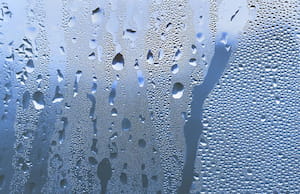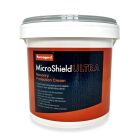Help & Advice Articles, Videos and How-to-Guides
Filter Articles

How to Prevent Heat Loss in a House with Permagard
In the winter months, you want your home to be a cosy retreat away from the elements. If your house is constantly cold, it’s an unpleasant experience. However, it can also have negative effects on your health and leave you out of pocket.
With the high price of energy and more increases expected, we’re all looking for ways to reduce our electricity and gas usage and preserve energy to save money on bills. Moving into colder months, you may be feeling particularly apprehensive.
There are a few simple DIY tasks you can do that are cost-effective and will improve the thermal performance of your home. Our energy saving tips will help you reduce heat loss by improving thermal efficiency, saving you money this winter and beyond.
Why is my house always cold?
There are multiple causes of heat loss in a building. It can be caused by poor insulation, structural issues, windows and doors, and even what we do in the home.
A lack of wall insulation is one of the biggest culprits, letting 35-40% of heat escape. In older properties with solid walls, insulating them sufficiently can be more challenging. Uninsulated roofs and floors, single-glazed windows, defects, cracks or holes in the structure of the building, as well as leaving windows open for long periods, can all also allow warm air to escape from your home. But there are solutions.
To combat this, it’s important to take proactive measures to reduce heat loss and save energy in the home, making your house more comfortable and energy bills less scary.
An often overlooked issue is damp. Higher levels of moisture in your walls can result in increased heat loss from your home. This is because wet walls have higher thermal conductivity than dry materials, meaning they transfer heat faster.
Does it cost more to heat a damp house?
Damp walls transmit higher levels of heat. This means that damp issues result in more heat loss. Your home will feel colder, and be harder and more expensive to heat.
With increases in energy costs, many of us will be trying to use our heating less and even be tempted to block ventilation to try and keep our houses warm. Some people may also turn off the heating in particular rooms, but these actions can all lead to further damp problems.
This then makes it harder to heat your home and will cost more money to fix any serious issues. British Gas recommends maintaining a temperature of 18–21 degrees, but this may not be right for all. The thought of leaving your heating on for a longer period of time might not seem appealing right now. It’s also true that the longer you have your heating on, the longer you’re losing heat.
It’s also worth noting that, while double glazed windows and a fully insulated house help prevent heat loss, they can actually contribute to condensation issues as there is less opportunity for moist air to escape. This is why it’s worth prioritising ways to reduce heat loss in your home to help save on energy bills.
Ways to reduce heat loss in homes
By tackling damp and condensation issues, you can help save money on energy bills by increasing overall thermal performance. There are a number of ways to prevent heat loss in buildings and energy bills. Permagard has the tools and tips needed to help you reduce energy bills by preventing house heat loss.
Preventing heat loss through walls
Preventing heat loss through walls involves properly insulating and damp proofing your home. Wet and windy weather can affect the thermal performance of a property – not ideal when living in the UK. Wet brickwork and masonry absorb moisture and lose more heat while increasing the risk of costly structural damage. So it’s important to protect your home from the elements to help with thermal efficiency and keep your property warm and dry.
Water repellents, such as MicroShield Ultra or PermaSEAL Facade Cream, help prevent heat from escaping out of damp walls. These repellents increase thermal performance by forming a barrier deep within the brickwork, preventing water from soaking into the masonry and causing issues. They are breathable, long-lasting solutions that can prevent heat transmission through wet walls, saving on energy bills. You only need to apply a coat or two for years of protection, making this a quick and simple way of keeping your home warm and comfortable.
You can also use these repellents to protect retrofit cavity wall insulations. Older retrofit cavity walls were generally not waterproof when first installed, leading to wet insulation that’s more likely to cause more damp problems. MicroShield Ultra can help protect this insulation and prevent it from getting wet.
Reduce maintenance spend to help with heating bills
High quality water repellents like MicroShield Ultra act as a protective barrier for your building, helping reduce maintenance costs. They help slow down the deterioration of masonry, resulting in the formation of fewer cracks and other common structural issues. This also helps prevent frost-thaw and water damage, and protects structural timber from excess water, reducing the chances of rot and mould.
Internal wall insulation for solid walls
Insulation can have a significant impact on how efficiently you can heat your home. It helps prevent heat from escaping. ISO-THERM is a simple, cost-effective way of insulating solid walls without major retrofits. It’s quick and easy to apply directly to plastered walls and prevents damp and mould while warming walls. For more information, read our guide to insulating solid walls.
Ventilation products to prevent costly condensation and damp issues
When you’re trying to reduce heat loss and energy wastage, ventilation is actually a great way to prevent damp issues. By keeping condensation at bay in an energy efficient manner, it actually helps with heating bills overall.
So how can you ventilate without losing heat? Heat recovery systems improve overall air quality by replacing stale air with fresh, filtered air – all while helping to prevent heat escaping from the house. These ventilation units recycle the heat, making them more energy efficient whilst cutting bills. They are relatively low maintenance and prevent more costly condensation and damp issues down the line.
The Kair Heat Recovery Unit in particular has a heat recovery rate of 84%, a great way to save energy at home while reducing your carbon footprint.
For localised areas, our Perma-Vent alleviates condensation by using natural forces alone – no electricity needed. It allows water vapour to escape your property without letting in draughts, thanks to its vapour-permeable membrane.
Read more about ventilating your home in our guide. Or, for quick tips for reducing condensation, watch our video below:
Are dehumidifiers good for condensation?
Dehumidifiers may provide some level of one-room protection, but this can be inconsistent. Essentially, you need an effective way of sorting condensation issues that is cost-effective, energy efficient and looks at your whole house – and a dehumidifier can only get you so far.
See our guide to stopping condensation for more information.
Green roofs for insulating buildings and improving thermal efficiency
If you have an outbuilding, home office or any other type of garden room, then green roofs are a great option for improving thermal performance.
Green roofs create and maintain a living temperature all year round, preventing sudden internal temperature changes. They’ll help keep the heat in during the winter, and keep the building cool during summer. It’s also good for the environment and local eco-system.
The benefits of green roofs do not end there. They also protect the roof’s waterproofing layer, slowing down degradation and extending its life span, ultimately preventing issues later down the line that may impact thermal efficiency.
Our green roof product range features everything you need to build a high quality green roof that will last for years to come. You can purchase everything from the drainage membrane to the root barrier separately, buy ready-to-go green roof trays or try our PermaSEAL green roof starter kits. These kits contain all the components you need for your green roof:
Read more about constructing your green roof here.
Simple ways to reduce heat loss
The methods listed in this guide are just some of the ways you can keep your home warm and dry. Our products are simple to install and low maintenance, ensuring that these measures are all hassle free.
There are other ways of reducing heat loss, including:
- Fitting carpets and curtains throughout your home.
- Installing double glazed windows.
- If you have old chimneys that are not always used, you can seal them using chimney balloons to prevent warm air escaping.
- Sealing cracks around windows and doors – you can also purchase draught excluders for the bottom of your doors, too.
Reduce heat loss in buildings with Permagard
If you have any questions about the thermal efficiency of your home and how you can help save money on energy bills, then speak to our team who’ll be happy to assist. Call our technical team on 0117 982 3282 or send an email to [email protected].
Show updates
- 24/11/2025 — Added key takeaways, more detail around heat recovery units and expanded the information on how to reduce heat loss.



